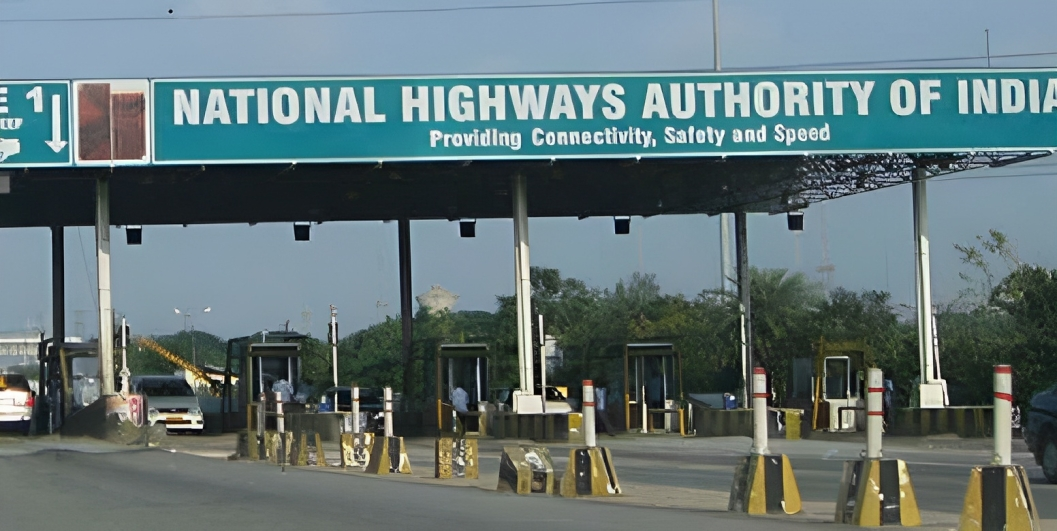Free Courses Sale ends Soon, Get It Now


Free Courses Sale ends Soon, Get It Now



Copyright infringement not intended
Picture Courtesy: economictimes
Context: The National Highways Authority of India (NHAI) awarded two Toll, Operate, and Transfer (TOT) projects, covering a total length of 400 km for Rs. 6,584 crore.
Key Components and Characteristics of the TOT model
|
Authorization |
●The Toll Operate Transfer (TOT) model was introduced by the Cabinet Committee on Economic Affairs (CCEA) in 2016. ●The CCEA granted NHAI the authority to implement the TOT model, enabling the assignment of toll collection rights to private concessionaires against upfront payments, thereby funding future highway projects in India. |
|
Project Eligibility |
●To be eligible for TOT, a national highway project must have been operational for at least two years. This means that the infrastructure is already in place and functioning. |
|
Assignment of Rights |
●In the TOT model, the government transfers the authority to collect toll fees from highway users to private sector entities known as concessionaires. ●Concessionaires, usually private developers or investors, are granted these toll collection rights for a specific period, typically 30 years, allowing them to manage and profit from toll revenue during this time frame. |
|
Upfront Payment |
●Concessionaires participating in the TOT model must make a substantial upfront lump sum payment to the National Highway Authority of India (NHAI). ●This payment provides an immediate financial advantage to the government, supplying a significant sum of money that can be utilized for various developmental projects and initiatives. |
|
Revenue Potential |
●Toll collection rights in the TOT model are assigned based on the projected toll revenue potential of a specific highway project. ●Concessionaires participate in a competitive bidding process, where they bid for these rights. The bidder offering the highest amount is awarded the concession, allowing them to operate and collect tolls on the highway. |
|
Operation & Maintenance (O&M) |
●Concessionaires in the TOT model are entrusted with the task of operating and maintaining the highway projects for the entire duration of the concession period, which is typically 30 years. ●Concessionaires have a wide range of responsibilities, including maintaining the infrastructure, performing repairs as needed, and overseeing daily operations to ensure the highway remains safe and functional for all users. |
|
Transparent Procurement |
●Concessionaires for TOT projects are chosen through a transparent and competitive procurement process, ensuring fairness and openness in the selection. ●The process follows predefined and approved guidelines, guaranteeing that all qualified bidders have an equal opportunity. This transparency encourages healthy competition among bidders, leading to the selection of the most suitable concessionaire. |
|
Fund Utilization |
●The upfront payments made by concessionaires in the TOT model provide the government with immediate funds, serving as a crucial financial source for future highway development and maintenance. ●These funds play a pivotal role in sustaining and enlarging the national highway network by supporting the construction of new highways and ensuring the continuous upkeep of existing ones, even in regions that might not be financially viable. |
|
Private Sector Participation |
●The TOT model actively promotes private sector involvement by inviting private companies to invest their capital in highway projects. This infusion of private funds supplements government resources, facilitating more extensive and efficient development. ●Private sector entities, with their expertise and efficiency, enhance the overall quality of highway infrastructure. Their involvement not only accelerates project implementation but also ensures that highways are well-maintained, contributing significantly to the country's transportation network. |
|
Long-term Concession |
●In the TOT model, concessionaires are granted a long-term concession period, usually spanning 30 years. This prolonged duration provides stability and financial predictability for both the concessionaires and the government. ●At the conclusion of the 30-year period, the rights and responsibilities of the highway project revert back to the government. This cyclical process ensures a continuous cycle of private sector involvement, revenue generation, and eventual government control, fostering sustainable development in the national highway sector. |
Summary
|
PRACTICE QUESTION Q. Why is infrastructure development crucial for India's economic growth, and what specific challenges does the country face in improving its infrastructure in various sectors, such as transportation, healthcare, and education? |
© 2024 iasgyan. All right reserved